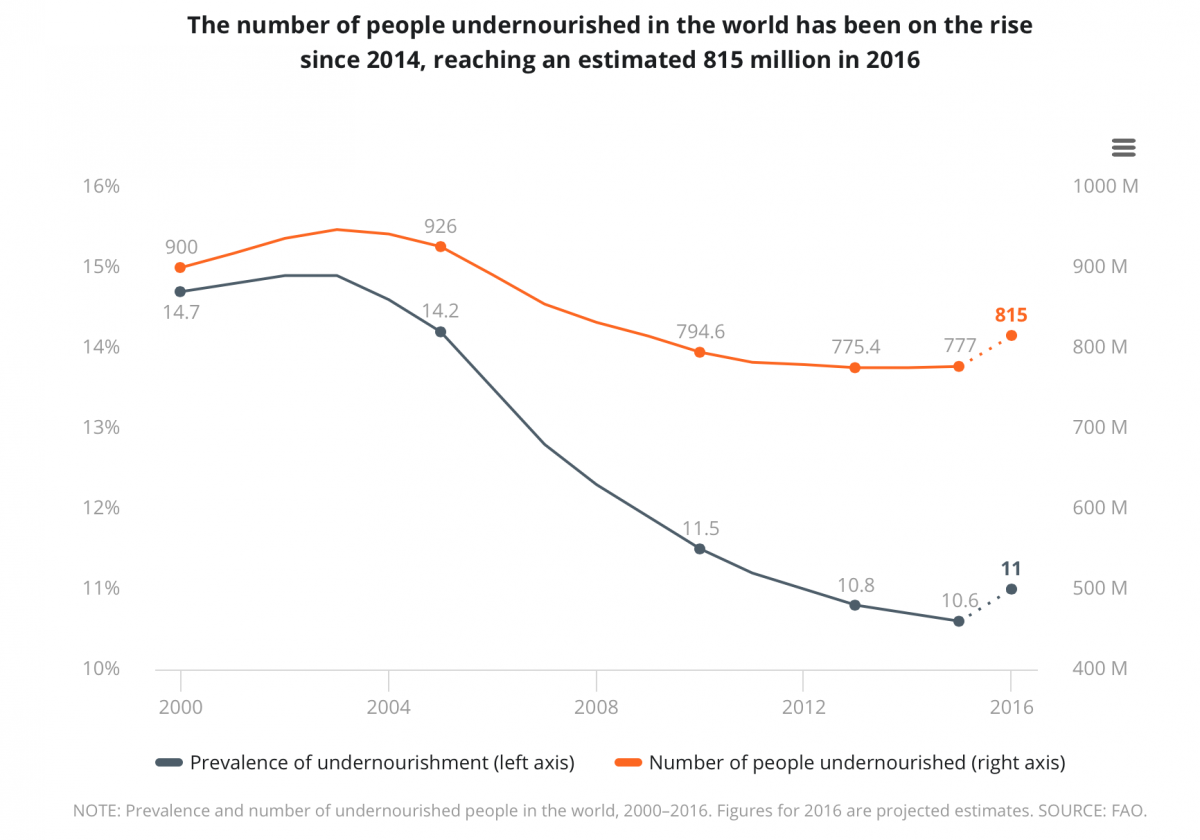The two seemingly contradictory problems of global hunger and obesity are on the rise, according to a new report from the UN s Food and Agriculture Organization (FAO).
The FAO report warns that the fight against global hunger is in retreat following years of progress. After steadily declining between 2003 and 2014, the number of undernourished people in the world increased for the second year in a row. According to the report, 815 million people suffered from hunger in 2016. That amounts to roughly 11 percent of the global population and is an increase of 38 million from the previous year.
This increase is driven in large part by war, the report s authors wrote. Well over half of the world s chronically malnourished population, and a full 75 percent of the world s stunted children, live in conflict zones.
In countries like South Sudan, Nigeria, Somalia and Yemen, violent clashes have exacerbated existing problems of food insecurity.
Conflict negatively affects almost every aspect of agriculture and food systems, from production, harvesting, processing and transport to input supply, financing and marketing, the report s authors write.
These armed conflicts are particularly devastating to rural communities, where much of the population relies on subsistence agriculture.
The situation is only expected to get worse, as climate change will not only pose increasing threats to food security and access to proper nutrition, but will actually spur armed conflict as populations are forced to compete over limited natural resources.
While the report does point to some progress, including a slight decrease in childhood stunting, it admits that the aim of a world without hunger and malnutrition by 2030 will be challenging.
But the increase in the world s malnourished population is not the only health problem identified in the report. Obesity rates have doubled since 1980 and is still rising everywhere at an accelerated pace.
More than 640 million adults roughly 13 percent of the world s adult population are obese, while 40.6 million children under the age of five are overweight. And it s a truly global problem. While adult obesity is still much more prevalent in North America, Europe and Oceania, it is also now on the rise in Africa and Asia. Likewise, the number of overweight children has also increased in most regions.
The numbers highlight an alarming problem. Across the globe, a disturbing number of people do not have proper access to healthy foods.
The coexistence of food insecurity and obesity even in the same household is often seen as paradoxical, but there are many explanations for this, the report states. As resources for food become scarce, people often choose to eat lower-cost, less-healthy, more energy-dense foods, choices that can lead to people becoming overweight and obese as their means to access healthy food diminish.
The report s authors write that their conclusions have set off alarm bells we cannot afford to ignore: we will not end hunger and all forms of malnutrition by 2030 unless we address all the factors that undermine food security and nutrition.
Still, they insist that the goal “can be reached if we strengthen our common efforts and work to tackle the underlying causes that leave so many people food-insecure.


